In this era of Industry 4.0, Building information modelling (BIM) is used by various building organisations, real estate companies, construction firms and the AEC (Architecture, Engineering and Construction) professionals for effective project analysis and management throughout the life cycle of construction projects. The key objective of BIM is to enhance project performance and produce better outcomes. Many projects running with BIM have been proven to be more efficient as they allow data and information to be communicated between relevant disciplines and parties, allowing better collaboration and decision making.
According to the BIM Market Research by MNM (Markets and Markets), the global BIM market size is projected to grow from USD 4.5 billion in 2020 to USD 8.8 billion by 2025, at a compound annual growth rate (CAGR) of 14.5%.
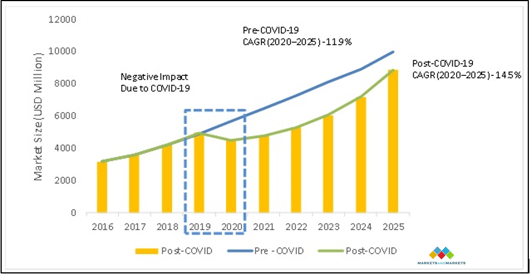
Fig: Projected CAGR of BIM Market Size for 2025
However, COVID-19 virus outbreak in around 100 countries across the world which has been declared as a public health emergency by the WHO (World Health Organisation), and is expected to have a negative impact on the overall BIM market. The Associated General Contractors of America (AGC) reports that at least 45% of contractors are experiencing delays or disruptions due to the outbreak. Government of developing economies such as China and India are gradually lifting the lockdown to resume construction and industrial activities to boost the country’s economy. Many building and infrastructure development projects such as India’s Smart Cities, China’s Olympic 2022 projects have resumed again, owing to which the demand for BIM is likely to increase.
The UK GCS (Government Construction Strategy) has been driving the industry to implement Level 2 BIM since 2016, with the aim to review approaches to existing cost estimating and cost planning processes leading to reliable project budget to achieve a 25 per cent cost reduction by 2025. Therefore, relevant costing framework, enabling 5D BIM cost protocol or standard significant to change dynamics of cost functions within BIM Environment is required to be developed as early as during design development stages. Current practices will be faced with a paradigm shift as buildings become more complex with diverse procurement approaches and higher expectations from clients. The requirement for a digital planning approach via 5D BIM for quantification and costing activities will be inevitable, and as cited by Ashworth and Perera (2015), that processes will be redefined to ‘Getting it right the First time’ meaning ‘Build it Twice’ once virtually and once physically in a ‘Digital Twin’ environment.
Thus, new standards and workflow will be required to be established in the implementation of 5D BIM under the Project BEP (BIM Execution Plans) to cater to the uprising requirements. RICS (Royal Institute of Chartered Surveyors) has been working on more prudent standards by putting substantial effort into the development of new requirements to harmonise ways of managing information in which 3D geometry and data is stored and shared between parties throughout the creation and care of both buildings and infrastructure in the built environment.
However, implementing the 5D BIM is challenging during this transitional period for professionals especially the Quantity Surveyor, as highlighted by RICS:
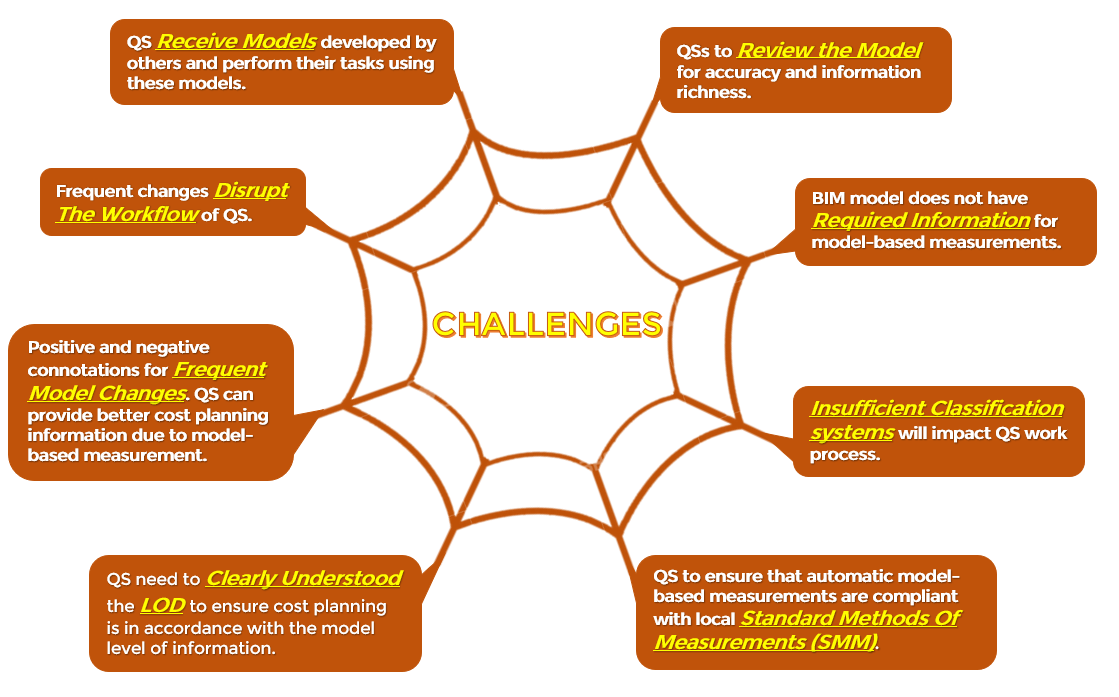
Fig: Challenges of 5D BIM Execution for QS
Hence in order to execute 5D BIM, the QS is required to adapt and adopt the new BIM-based digital approach for executing their tasks throughout the life cycle of the project between pre-contract and post-contract. QS has been working traditionally with 2D plan drawings and information which make the transitional process to BIM process as difficult as ‘Crossing the Chasm’. One of the main reasons is they would need to check if the BIM entities are modelled in accordance with how it will be calculated to the standards of measurement required specifications. As the learning curve is steep lack of confidence on BIM, QS reverted back to their comfort zone. Today, the industry is facing an issue that BIM model quality may not be fitting for quantification and costing purposes by the QS.
In fact, there are many digital applications on 5D BIM provided in the market, and most are developed based on a relational database, where they can read the provided information in the model. This is a problem when the model does not contain the information required, the model cannot be fully utilized, where it happens in actual projects, and as cited by Dr Peter Smith from ICEC, if BIM is done without the proper information, it would be just ‘Garbage in – Garbage Out’.
As a result, QS requires a solution which enables them to connect to the BIM information while also allowing them to navigate alongside the standards measurement rules, and QS specifications in a 3D model environment and this model will be continuously maintained throughout the entire project life cycle. Hence this model will contain the design parameters and QS parameters combined to generate a ‘BIM Cost Model’ for the QS.
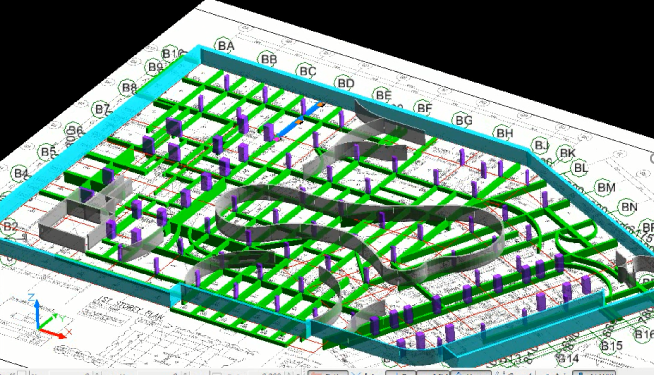
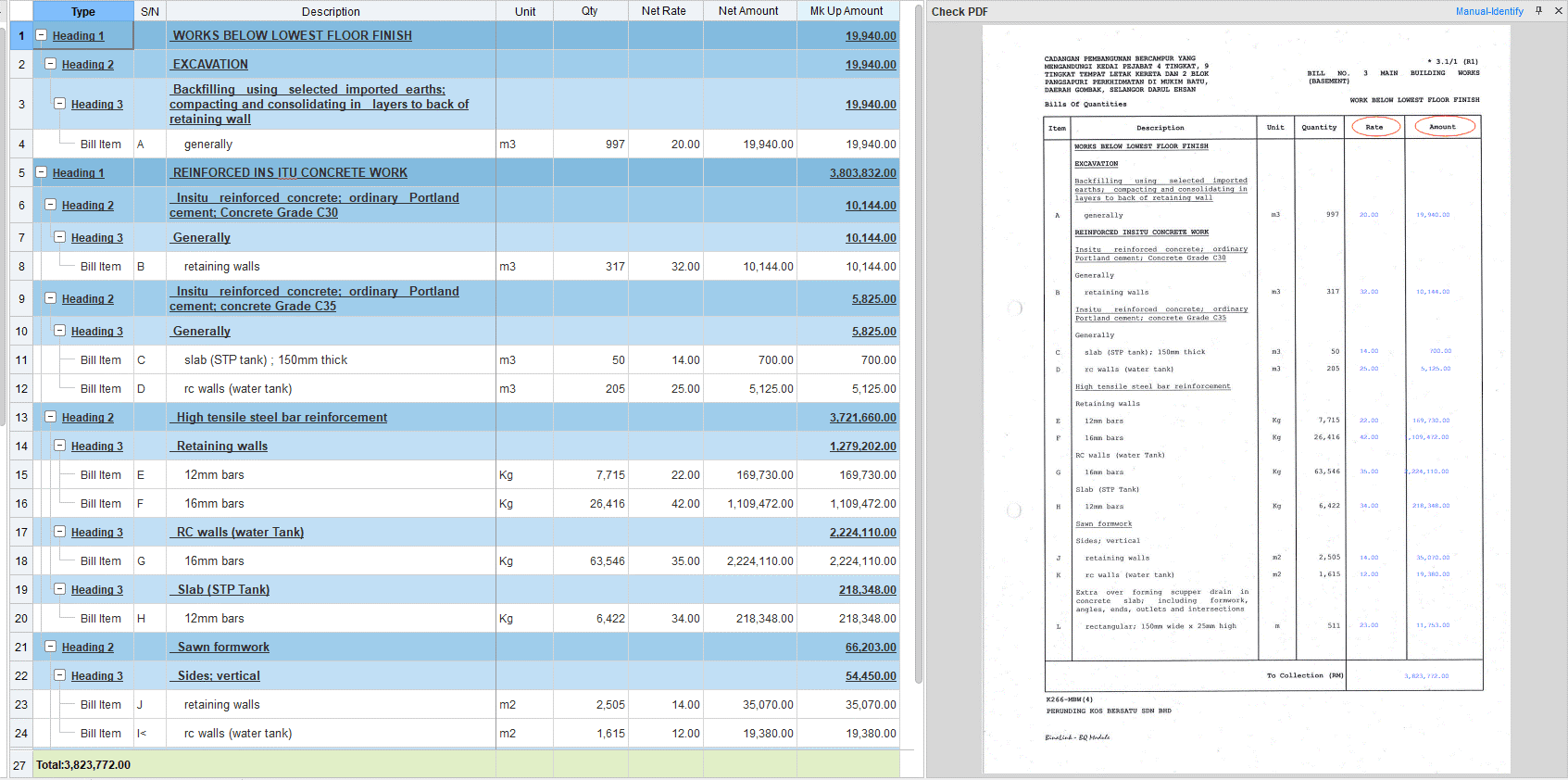
Fig: ‘BIM Cost Model’ provide integration between 2D Plan Drawings, BIM Models and Costing
For the past decade, Glodon Co. Ltd., one of the top information technology and service provider for the AEC industry, has been continuously developing enabling digitalisation solution in the built environment. Glodon has also been working towards bridging BIM and QS under a single platform. With product-line such as Cubicost, the execution of 5D BIM for QS has seen to be realised and make possibility. Cubicost enables the information from 2D plan drawings or 3D BIM Models to transform into a ‘BIM Cost Model’. This ‘BIM Cost Model’ allows the users especially QS to input and extract required information and data to fulfil their daily task in contract and cost management. Built on a 3D graphical technology platform, the system provides professional capabilities and user experience which has never yet exist or seen before in the current industry.
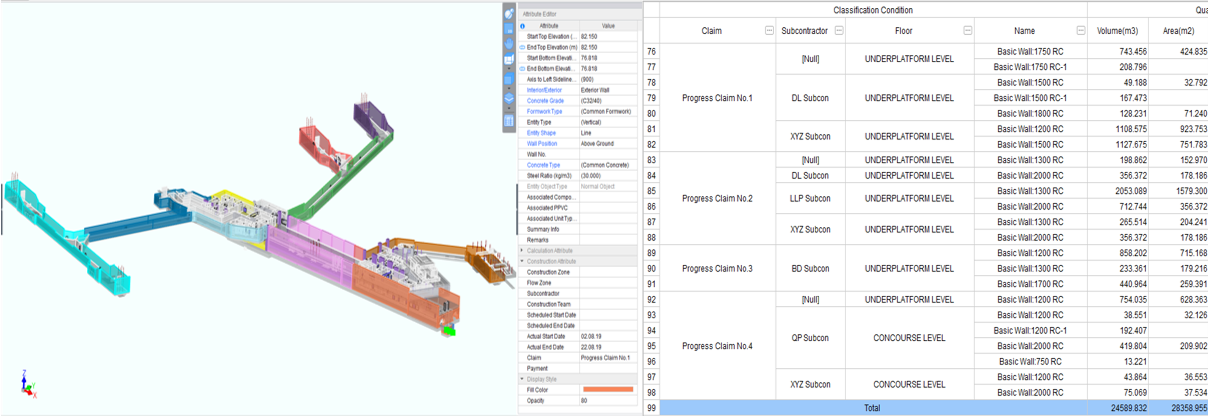
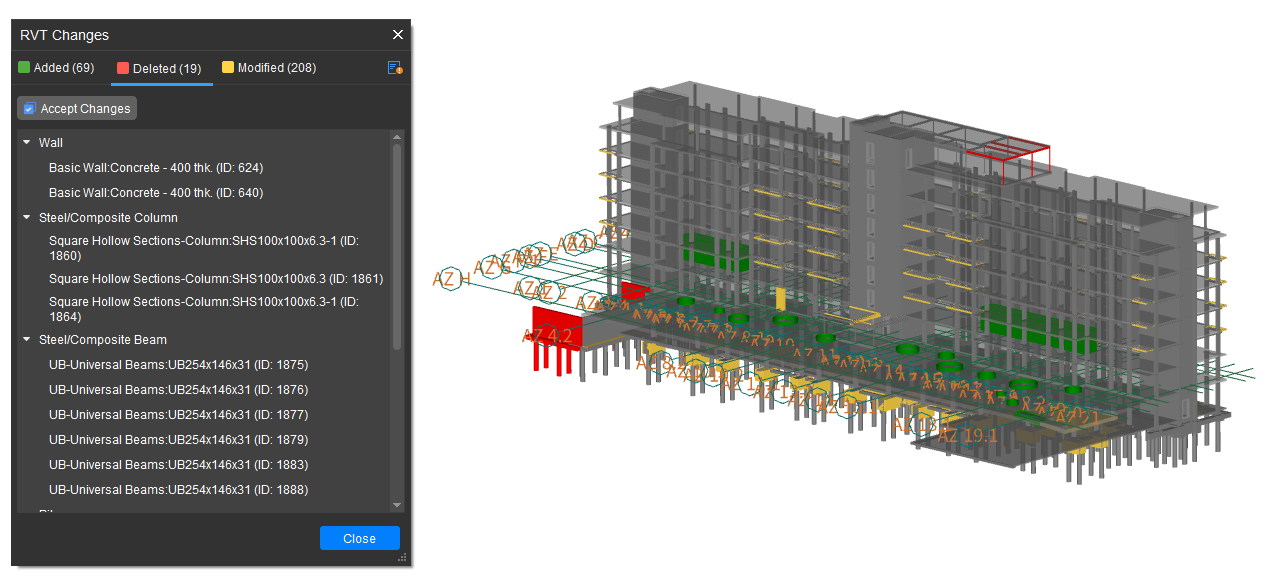
Fig: 5D BIM in Progress Claims and VO
By having the most practical workflow, work processes can be streamlined to enable smooth sailing. Hence, it is important to identify the core tasks to be done digitally in the process. For example, quantity take-off and cost estimating during pre-contract stage can be done with BIM, however, the BIM model should be defined and checked before the measurement and costing work can be executed, to ensure the accuracy of the results. Besides that, if BIM is required for progress claims, a workflow should also be in place to ensure that the Base/Contract Model is well defined and agreed upon by all parties before the initial claims so that any additional or omission can be clearly identified as the project proceeds. There are many scenarios where 5D BIM can be executed but the success of it will depend on practical workflow paired with good quality BIM model.
In conclusion, 5D BIM will enhance the work quality of the QS but to achieve that, they will have to endure the steep learning curve and challenges faced in the initial phase. But once the skills and capabilities are imbued, the work efficiency and productivity will increase exponentially. There have also been numerous successful project cases which were done for on-going projects both locally and international, and have proven that QS who adopt a digital system for executing daily task is successful ambassadors of 5D BIM.



